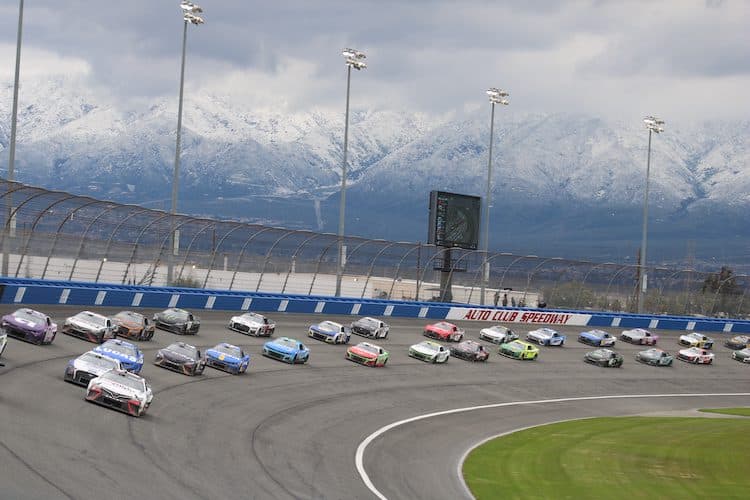After a long winter, the stars and cars of the NASCAR Cup Series kicked off the 2024 racing season with the Clash at the Los Angeles Coliseum on Feb. 3.
The Clash was originally scheduled for Sunday, Feb. 4, but with a serious rainstorm threatening the Los Angeles area, NASCAR elected to scrap plans for the Saturday evening heat races and run the main event at that time instead.
While the fans who had planned to arrive on Sunday missed out, NASCAR did at least get the entire race in and the Cup teams on their way out of Southern California before the worst of the rain arrived.
Now the question is, when will NASCAR be back?
For most of the last 20 years, long before the Clash moved out West, the early weeks of the Cup season included a stop at Auto Club Speedway in Fontana, Calif. Since the track opened in 1997, it has been the closest connection to the LA market for NASCAR’s top division.
But there will be no racing at Auto Club in 2024. Most of the 2-mile oval’s surface has been demolished, with only the frontstretch left intact. The track’s future remains uncertain — and with it, NASCAR’s presence in Southern California.
The reason that Auto Club is closed and half destroyed is all too familiar: the land the track sits on became more valuable than the track itself. That has been the sad fate of many racetracks over the decades, especially in Southern California. The legendary Riverside International Raceway, an epicenter for all types of motorsports in the LA area, hosted NASCAR for 28 seasons until closing in 1989. Ontario Motor Speedway, a fast 2.5-mile oval similar to Indianapolis Motor Speedway, barely lasted 10 years before it was purchased by a real estate company in 1980 and closed for redevelopment.
Auto Club, located just a few miles away from where Ontario once stood, was supposed to be somewhat protected from redevelopment. The speedway was constructed on the site of a former steel mill where heavy industrial activity had rendered the property unsuitable for housing. With NASCAR’s popularity on the rise, Roger Penske led the construction of a modern and beautiful racetrack, one that seemed well-positioned to serve as NASCAR’s Southern California home long into the future.
However, Auto Club never quite captured the California dream. For much of the track’s history, the quality of racing was uninspiring at best and dreadful at worst. Races during the 2000s were often runaway aero parades,…
Click Here to Read the Full Original Article at …

